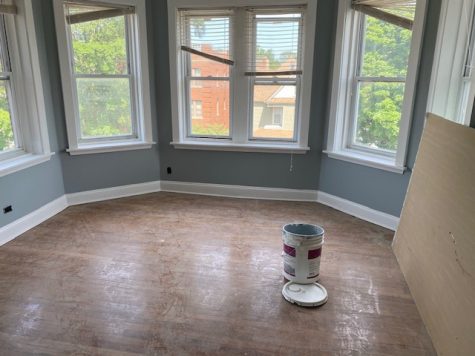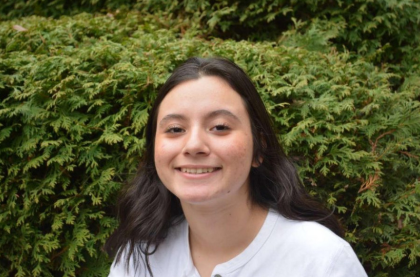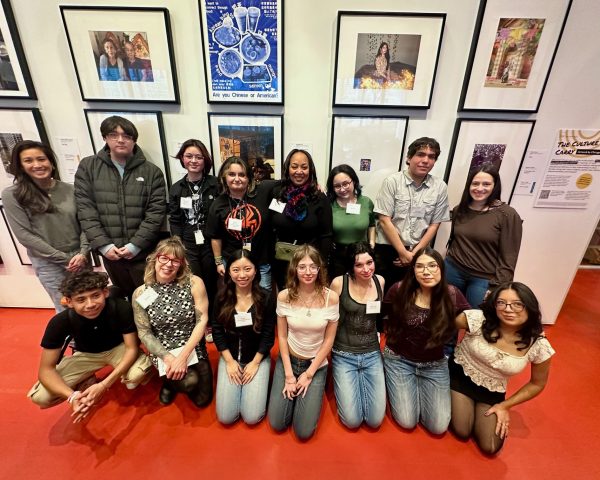Combating gentrification in Chicago
Property investor Jeanne Peck buys vacant apartment buildings to sell to local residents at a low price. By doing this, Peck said she is able to help stabilize neighborhoods affected by gentrification. (Photo courtesy of Jeanne Peck)
Over the summer, a vegan ice cream shop called Peachy posted a picture of their paleta-style cart to their Instagram account. As screenshots of the post spread on social media, people began to criticize the shop for appropriating Latino culture and contributing to the displacement of minorities and low-income families in neighborhoods. Situations like this have sparked action towards fighting gentrification and displacement in Chicago.
According to the Merriam-Webster Dictionary, gentrification is the process of rebuilding homes and businesses, which results in increased property taxes and ultimately leads to the displacement of earlier and poorer residents. Even though the Peachy picture brought attention to the impacts of gentrification this year, this has actually been an issue that various Chicago neighborhoods have been facing for a long time.
Research conducted by The Urban Displacement Project in 2017 concluded that 42% of Chicago’s neighborhoods experienced a quick increase in housing costs between 2000 and 2017. Additionally, their research found that 200,000 households in Chicago that year were already experiencing gentrification or displacement.
Selena Garcia, Div. 163, has lived in Logan Square her entire life. During the eighteen years of living in the neighborhood, Garcia has noticed people that she knew and grew up with having to move away because they could no longer afford to live in the neighborhood.
The displacement of families, according to Garcia, started off with the attraction of the low price of houses and buildings in the area. The new popularity caused property taxes and prices to increase, forcing people to move to areas with houses they could afford.
“People that I knew and grew up with had to move down to the South Side or the West Side because they could not afford living here anymore,” Garcia said.
To combat the issue of high-priced housing, organizations like ONE Northside create and work with campaigns that focus on diversifying and reducing gentrification.
Through their Affordable Housing Campaign, ONE Northside’s Affordable Housing Team is part of the Chicago Housing Initiative (CHI) coalition, which pushes the Chicago Housing Authority to use its unused funds to provide public housing. The organization has also been successful in helping pass the Single Room Occupancy Preservation Ordinance and the Affordable Requirements Ordinance.
While the North Side of Chicago is known for its gentrification issue, it is not the only part of Chicago being harmed by it.
On the South Side, Jeanne Peck, Principal of Darrow Peck Investments and Consulting, said she works with developers to provide cheap housing for people that need it. Through their work, they can bring in new people to vacant areas to help stabilize the neighborhoods affected by displacement.
“By bringing residents to these once vacant apartments, they begin to care about their surroundings and start shopping at stores nearby,” Peck said. “Over the long term, there is some vibrancy to the neighborhood.”
Peck said she started doing this because she was bothered by the fact that some parts of Chicago were thriving and becoming expensive, while other areas were suffering.
In her most recent project in Auburn Gresham, Peck said she worked with a developer to buy and renovate a vacant apartment building. Now that the building is fixed and updated, the developer has to commit not to charge over a certain amount for the units so they can sell them to residents for an affordable price.
Along with high-priced housing, as more people come into the neighborhood they take over resources and businesses that belonged to minorities and low-income families, according to Garcia.
Garica has seen a couple of Mexican-owned businesses that she went to as a child be bought and rebranded into trendy vegan and non-GMO stores. Additionally, Garcia said that thrift stores in the area that carried affordable clothing and items are now raising their prices due to the increased popularity of thrifting and reselling.
“You are contributing to gentrification by taking away these valuable pieces of clothing that could go to some little girl that is living in the street with her family or a baby that people need to stock up on clothes for,” Garcia said.
For people that cannot join organizations like ONE Northside, Peck suggests that they focus on spreading awareness and reflecting on how they might contribute to the problem.
“When you’re in your twenties and you go buy a property, what are you going to do with it? Who does it impact and how? Just be aware of that because it helps you understand the issue and how to change it,” Peck said.

Your donations directly fund the Lane Tech student journalism program—covering essential costs like website hosting and technology not supported by our school or district. Your generosity empowers our student reporters to investigate, write, and publish impactful stories that matter to our school community.
This website is more than a publishing platform—it's an archive, a research tool, and a source of truth. Every dollar helps us preserve and grow this resource so future students can learn from and build on the work being done today.
Thank you for supporting the next generation of journalists at Lane Tech College Prep!

Stephanie is a senior in her second and final year with The Champion (formerly The Warrior). As a member of Glee Club, she loves to sing and jam out to...




